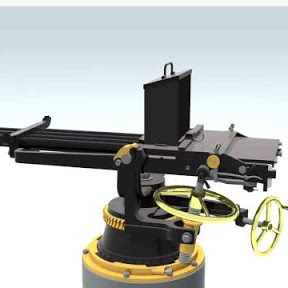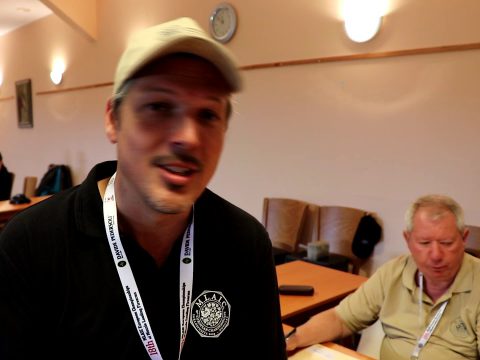The 12.5 inch Muzzle Loading Gun Mark I of 1885 fired a shell weighing 820 pounds (372 kg) to a range of 6,000 yards (5,586 M). It weighed 38 tons (38,610 Kg) and was generally used as a coastal defence cannon mounted in forts. The gun could fire 3 types of shell – a Palliser armour piercing shell against armoured warships, a common explosive shell for unarmored ships and a shrapnel shell to be used against small craft and assault forces.
The animation is based upon installation of 7 12.5 inch RML guns at Fort Nothe, Weymouth (UK), which protected Portland harbour. The fort, built between 1860 and 1872, was upgraded to mount these large guns in 1893-4. The underground magazines and shell rooms were also enlarged.
The video shows how the very large guns were loaded, aimed and fired from within the cramped casements of the fort, and without the use of power or hydraulics. The loading drills are taken from the Handbook of the RML 12.5 inch 38-ton Gun, dated 1885, with much assistance and advice from historians familiar with the period.
Fort Nothe is open to the public and has many interesting exhibits covering gunnery and torpedoes from the 1880’s to the 20th century.
While this video focuses on the drill and fort, a further video is planned to show the construction of the gun and the mechanisms of the platform. Please watch this space.
The model and animation were made using Cinema 4D, and iMovie.
Music: Light Expanse (Unicorn heads), Forest of Fear (Aakash Gandhi)
References:
Handbook for the R.M.L 12.5 inch 38-ton Gun, Marks I and II, 1885
Drawings of Fort Nothe, The National Archives
Permanent Fortifications for English Engineers, Major J F Lewis, 1890
Victorian Forts & Artillery (victorianforts.co.uk)
My thanks to all who assisted and advised me, and in particular:
the Curator and team at Fort Nothe
Duncan Williams

Hi, I’m Rob, otherwise known as VBBSMYT.
I create the animations on my iMac using Cinema 4D, which I find very intuitive, and allows me to add smoke and flames, and then send the model to my trusty Render farm.
I make my models as accurate as possible through reference books and particularly good drawings. You may have seen my animations of early torpedoes and machine guns on YouTube. I enjoy finding out how things work and it has been fascinating to track the development from the late Victorian period up to World War 1.





